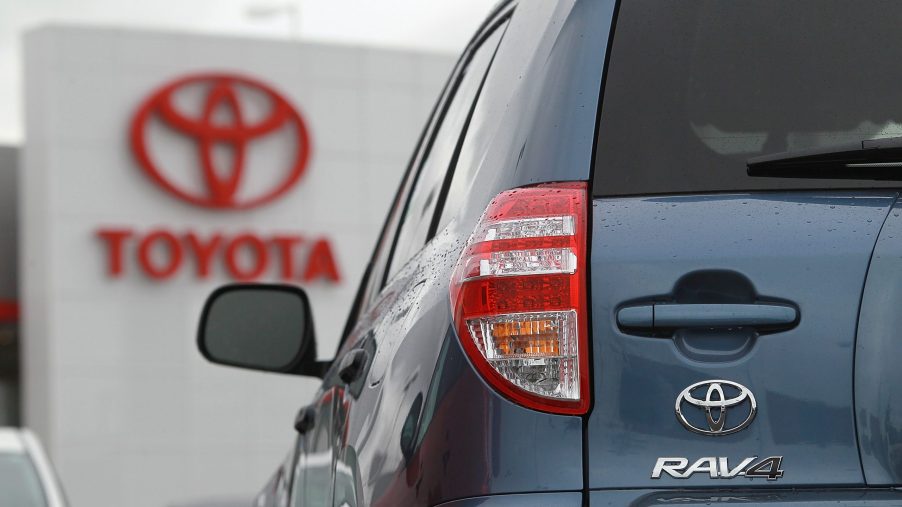
The Toyota RAV4 Needs To Bring This Family Feature Back
One of the best-selling compact SUVs on the market happens to be the Toyota RAV4. With a couple of decades of production under its belt, this SUV has appealed to a lot of families over the years, more so than some of Toyota’s sedans. The reason is likely due to the reasonable price and its roominess. There’s one other reason many families might have been drawn to it back in the third generation.
This generation had one feature that was very appealing for many families. However, this feature ultimately disappeared about six or seven years later. Consumer Reports shows what went into each redesign of the RAV4, especially the generation that covers the 2006 to 2012 model years.
What the RAV4 offered families in previous models
In the third generation redesign, which ran from 2006 to 2012, the Toyota RAV4 offered a rear side-swing gate. Instead of being an advantage by offering easier access to the rear storage, it turned out to be a burdensome feature instead.
It also offered third-row seating as an option for those who wanted the SUV to haul seven passengers instead of five. Rear seating was roomy, including the third row, which proved to be useful for families who needed the extra seats for their younger passengers, unlike some other compact SUVs that offered a third row.
However, with two full-sized adults in that third row, the second row would have to be moved up a bit to accommodate the last row of passengers.
What Toyota offers now with the RAV4
When it came time for the 2013 redesign, Toyota decided to get rid of some features that didn’t align with its future plans. The company ultimately dropped the side-swing gate and the third-row seating in favor of other features.
Instead of the annoying side-swing gate, Toyota opted, in the 7th generation design, to go with the more traditional lift-up rear gate. Now you can easily store plenty of items in the cargo area.
But, as far as the third-row seating is concerned, Toyota dropped it in the 2013 model, and haven’t brought it back since. Now, the second row has more legroom, but the SUV can only seat up to five passengers instead of seven, which makes it a little more difficult with families needing that third-row option.
Should the Toyota RAV4 bring the third-row seat back?

The reason Toyota dropped the idea of a third-row for the RAV4 is likely due to its other SUVs having that option, as explained by VEHQ.com. Currently, there are four other Toyota SUV models that have a third-row seat.
These include the Highlander and Highlander Hybrid. It also includes the 4Runner, the Toyota Sequoia, and the Land Cruiser. Each one having plenty of leg and headroom to accommodate another row of seats.
While a family could theoretically purchase one of those other larger SUVs, not all of them will want such large vehicles. The RAV4 is a compact SUV that could easily seat a couple of young passengers or adults if they move the second row forward.
The prices are another dealbreaker for most families. The current RAV4 model starts at $26,050 for the base trim. If there was an option for a third-row, the price will likely go up a couple of thousand dollars.
But it should still come in at least $7,000 less than the base model of the Highlander, which is about $35,000 to start. The Sequoia goes for around $50,000. So if the RAV4 added an optional third-row it would likely be the most affordable Toyota SUV with a third-row.
The Toyota RAV4 is a great compact SUV, the proof is in the sales numbers. But, without that third-row option, it forces some to turn to other brands or to the larger, more expensive Toyota SUVs.


